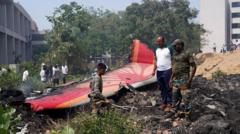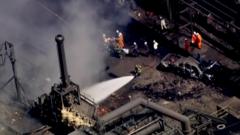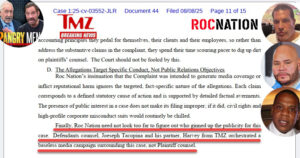Investigators have accessed crucial data from the flight recorders of an Air India aircraft that crashed near Ahmedabad earlier this month, with ongoing analysis set to shed light on the tragedy.
India Recovers Flight Data from Crashed Air India Boeing 787 in Key Investigation Step

India Recovers Flight Data from Crashed Air India Boeing 787 in Key Investigation Step
Civil aviation ministry confirms retrieval of black box data as investigators work to uncover crash causes.
Air India’s London-bound Boeing 787-8 Dreamliner crash on June 12 has shocked the aviation community, with at least 270 lives lost shortly after takeoff from Ahmedabad airport. The civil aviation ministry confirmed that critical flight recorder data has been retrieved, marking an important milestone in the ongoing investigation.
Both sets of the Enhanced Airborne Flight Recorders (EAFRs)—the technical term for the aircraft’s “black boxes”—were recovered from the crash site soon after the incident. One was found on a rooftop, while the other was located amongst debris on June 13 and 16. It may take weeks for the government to release detailed information gleaned from these recorders.
The Boeing 787 is equipped with advanced data recorders that meticulously monitor flight data and cockpit interactions. These devices capture precise information regarding flight dynamics, gear and flap positions, engine performance, and even communication within the cockpit. Such data is essential to reconstruct the flight's last moments and ascertain the factors leading to the crash.
The analysis process is already underway, led by the Aircraft Accident Investigation Bureau (AAIB) of India in collaboration with the U.S. National Transportation Safety Board (NTSB). The aviation ministry issued a statement confirming that the retrieval and analysis efforts focus on establishing the sequence of events contributing to the accident, with the ultimate aim of bolstering aviation safety.
Jennifer Homendy, chair of the NTSB, has expressed optimism that the findings from this investigation will be released promptly, emphasizing the importance of transparency for public safety and awareness. She acknowledged the cooperation received from the Indian authorities in the investigation.
The decision to delay the downloading and initial examination of the flight data raised eyebrows among aviation experts, many of whom described the time taken as unusual for such a high-stakes event. Flight 171 had a tragically brief operational history, airborne for less than 40 seconds before making a distress call and subsequently crashing into a densely populated neighborhood in Ahmedabad.
This air disaster remains one of the most perplexing incidents in India’s aviation history, with investigators now working tirelessly to uncover the truth behind the tragedy.




















